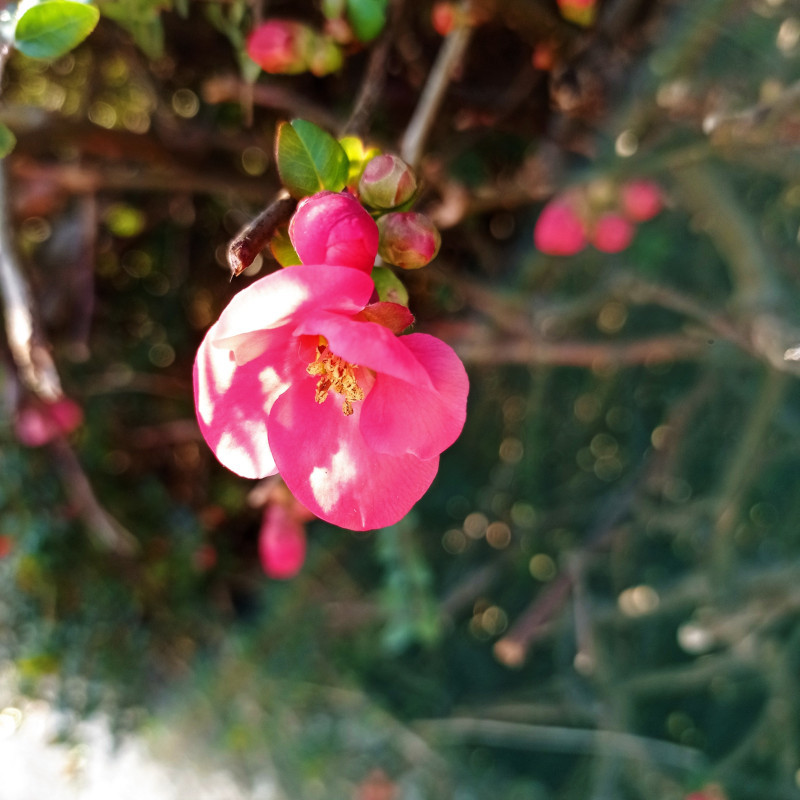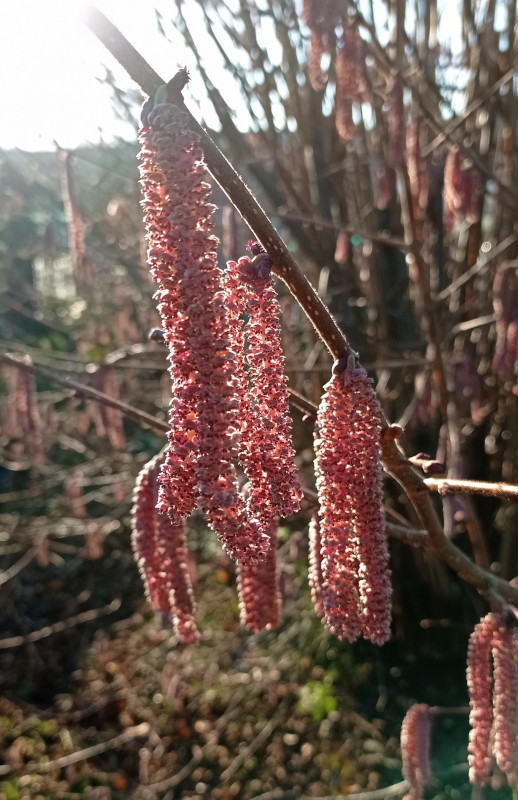Preparing your vegetable garden for spring planting
I don’t know about you, but I’m feeling impatient right now. The sun feels warm enough to start digging and planting on my allotment in the daytime, but the overnight temperature is discouraging. So what spring cleaning gardening and garden preparation tasks can you do now?
Pick anything that’s still growing.
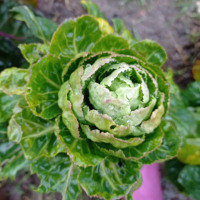
I still have tasty sprouts, a few winter cabbages, a few leeks, and rocket and garlic mustard to pick for salads. Cut the top sprout to encourage the ones below to swell, but my Brassicas are almost done at this time of the year. Brassicas include kale, broccoli, cabbage, and sprouts. When they finish, you can uproot them and add the whole stem with roots straight onto the compost heap. Then, prepare that area for the next crop by raking it and adding a top layer of compost.
Roots will follow cabbages or sprouts, so think of planting turnips next, as they have been so much in the news, or swedes, beetroot, or carrots.
Save seeds.
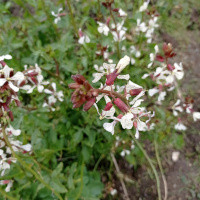
On my allotment, Rocket has almost reached the end of its cycle now and is flowering, providing nectar for early bees.
To save the seeds, allow the plant to form seed pods, and it will then die off. Cut the stems with the pods intact when they turn colour to a sandy brown, and store them in a shed. Then you can plant Rocket wherever and whenever you like. I love to plant it later in the year to overwinter because it is fine in cold weather and I have lots to eat in the summer months.
Weed where you have planted rows already.

For me, this means keeping an eye on where I have already planted broad beans, peas, garlic and onions. Weed gently around the peas and beans by pulling up weeds, because they rob your nitrogen fixers of the goodness in the soil, which can reduce the size of the beans and peas.
If the ground feels very dry, then water them now too because in Kent our soil is dry 2 inches underground.
Be grateful for surprises! Parsnips time.
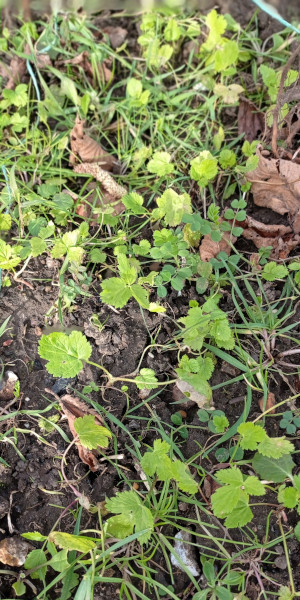
You can have a pleasant surprise when weeding. I found a row of parsnips had sprouted in the warm weather we enjoyed recently in Kent. These must have sown themselves from seeds left on a flowering plant because I had an accident last year that had me in a wheelchair for half the year, which prevented me from stopping the accidental seeding. February and March is the time to plant parsnips. They are notoriously slow to sprout and also difficult to weed because parsnip roots do not like being disturbed, so try to remove grass by pulling it gently but do not dig the parsnips at all. Let’s see if these continue to grow!
Prepare rows and remove big stones or the roots will grow around them.
Add a generous layer of compost or general fertilizer, but not manure, because roots will grow strange contorted shapes if you do.
Take a look at the clean lines of a spring garden.
Now is the time to decide where this year’s crops will fit, and if you have raised beds, then the choice is easy. You just check your crop rotation plan and add the next one. My allotment has soil beds, and I can easily change the shapes of beds whenever I like because I always grow a large crop of corn and need to clear a huge spot for that. Once the corn patch is settled on, then I plan the rest.
Get your garden plan done and order /buy seeds. Remember what you planted last year so that there is no conflict. On your VegPlotter plan, you will get advice if there is a problem with trying to plant certain veg in an area that had the same crop last year. It also advises you on good companion planting.
Crop rotation
Remember what was in that patch this time last year or what you overwintered there. If it was potatoes, squash or anything like tomatoes, pumpkin courgette etc, now is time to manure the pot and plant peas or beans when the frost is finished.
If it was beans or peas or onions or garlic etc, now is the time to plant cabbages or anything from that family. This includes kale, cauliflower, cabbage and sprouts.
If it was cabbage, kale or cauliflower now you can plant roots – parsnips, carrots, turnips and swedes etc. NO manure!
If it was carrots, beetroot or swedes, you are back to year 1, and you need to add manure or fertiliser and start again with year 1 crops.
Start digging out beds for potatoes, peas, broad beans and summer squash
Fruit trees and bushes
Strawberries, raspberries, blackcurrants, gooseberries, redcurrants and apples, pears, cherries, plums, and apricots can all do with a generous layer of compost at their roots right now.
Now is your last chance to prune apple and pear trees. It’s too late if they are already flowering. Save pruning cherry trees until after they have fruited in July. Sharp cuts made now can allow disease to enter and rot the branch.
Gooseberry, redcurrant, blackberry and blackcurrant pruning is fine right now. Remove old dead wood, it should almost snap off, and give this year’s fruiting branches some air and light. Remove any crossed branches. You can pot up strawberry runners to make new plants now too. Add some compost to the pot and make sure the runner is pressed down so that the new roots take in the pot. After a couple of months, cut the stem connecting it to the mother plant and plant it in the soil somewhere new.
Some other tidy-up jobs.
It is fine to rake up leaves and if they have dried, you can just crumble them into leaf mould directly onto the soil or into pots. Wet leaves can be added to a leaf mould bag or container. By May, they will have dried and you can make them into mulch for any plant that needs some moisture retention in summer.
Pick and dig in comfrey leaves now. If you have evergreen comfrey as I do in Kent, you can keep picking handfuls every few weeks and add them to any new patch you are digging, where they slowly release their goodness at the roots.
Dig out any finished compost from your heap and relocate slugs and snails into a new composting area where they can get to work. Compare the different colour of your soil and the rich coffee-brown compost and then add it to vegetable beds, and rose beds.
Clean out the pipes that lead to your water butts, if they tend to get clogged with moss or leaves. If you don’t save rainwater, think about it because if we get another summer like last year, the effort now will be worth it.
Prepare your soil, and maybe water.
Your plan is ready now, you know what is going where and you have spread compost. Next think about the hungry plants like tomatoes, cucumbers, and squash, and give those areas some manure.
If you grow asparagus, adding some manure now is a great idea to feed them through the season, which starts very soon. Check the soil in the bed, too to see if it is very dry because mine needed water last week. Southern parts of the UK may need some watering if the rain does not arrive soon. Count your blessings further north if you have had lots of rain.
You can warm up some soil in areas by placing agricultural fleece, a cloche or recycled plastic bags. That extra heat will give new plants some help in establishing strong roots. Remove them when you begin to plant in spring.
Conclusion
Spring is here, so don’t forget to just enjoy being outdoors in your veg garden or at the allotment and admire anything in bloom, like the gorgeous quince, and the catkins on my Kent cobnut. Next week we will look at preparing your soil in detail for all the growing they will do this summer.
